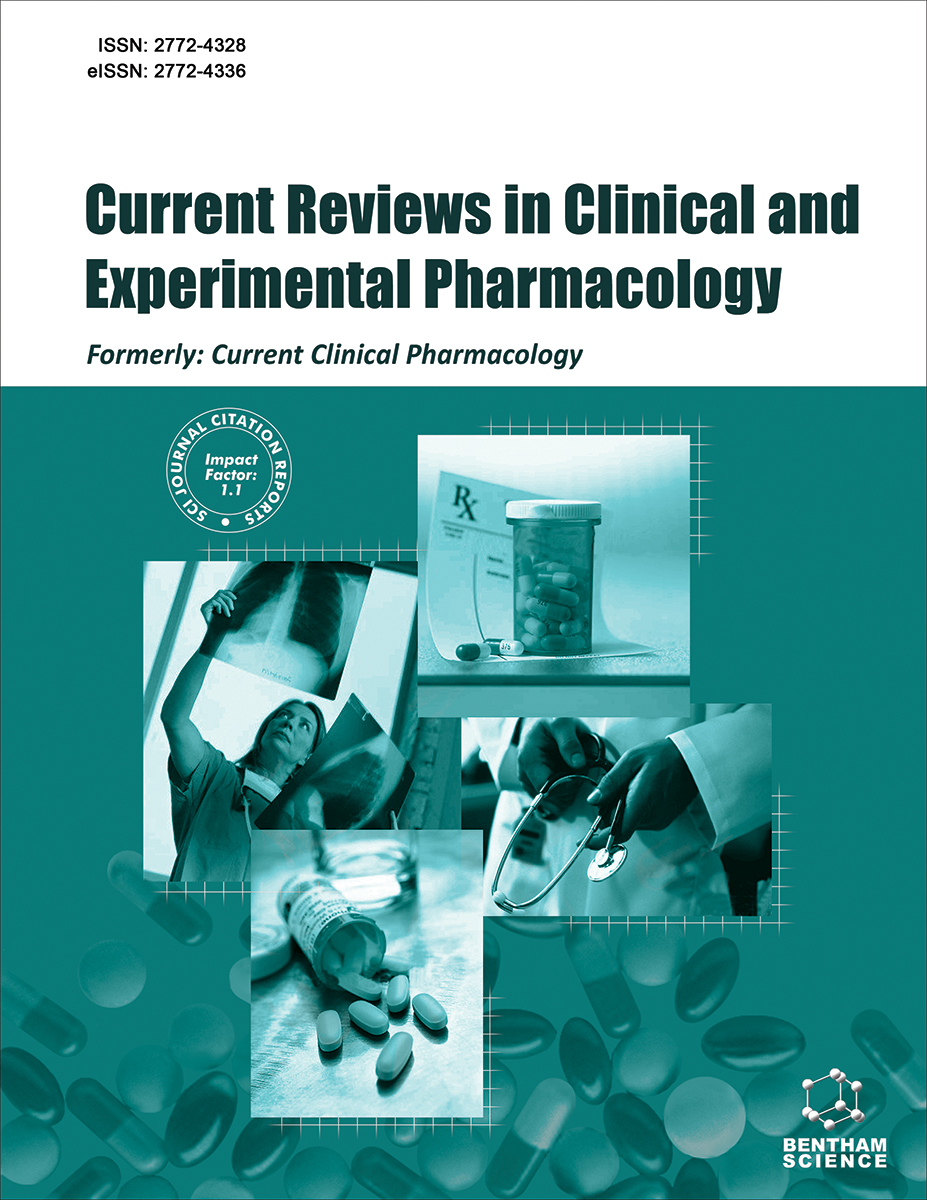- Home
- A-Z Publications
- Current Reviews in Clinical and Experimental Pharmacology
- Previous Issues
- Volume 18, Issue 1, 2023
Current Reviews in Clinical and Experimental Pharmacology - Volume 18, Issue 1, 2023
Volume 18, Issue 1, 2023
-
-
Drug Sensitivity Testing for Cancer Therapy, Technique Analysis and Trends
More LessAuthors: Da-Yong Lu and Ting-Ren LuThe techniques and qualities of drug sensitivity testing (DST) for anticancer treatment have grown rapidly in the past two decades worldwide. Much of DST progress came from advanced systems of technical versatility (faster, highly-throughput, highly-sensitive, and smaller in tumor quantity). As the earliest drug selective system, biomedical knowledge and technical advances for DST are mutually supported. More importantly, ma Read More
-
-
-
Fluoroquinolone-induced Glycaemic Aberrations: Could Quinolones be Repurposed to Serve as New Antidiabetic Agents?
More LessAuthors: Omobonlale Ayodele, Setshaba Khanye, Mamosheledi Mothibe and Ntethelelo SibiyaNalidixic acid is a synthetic antibiotic discovered in the 1960s during the synthesis of chloroquine, an effective drug for treating malaria. Nalidixic acid became the backbone for developing quinolones that are now widely used clinically for the treatment of various bacterial infections. The mechanism of action of quinolone involves the inhibition of topoisomerase II and topoisomerase IV. In attempts to improve the potency Read More
-
-
-
Review of Clinical Equipoise: Examples from Oncology Trials
More LessAuthors: Majd A. AlHamaly, Karem H. Alzoubi, Omar F. Khabour, Ruba A. Jaber and Wael K. AldelaimyBackground: The current standards that govern clinical research have been shaped over the years through many historical, social, and political events. The third principle of the Belmont Report, Justice, guides the scientific community toward the equal distribution of benefits and risks in research involving human subjects. Clinical equipoise is the status of genuine uncertainty by the investigator about the superiority of one Read More
-
-
-
Matrix Metalloproteinases; A Biomarker of Disease Activity and Prognosis in Spondyloarthritis: A Narrative Review
More LessBackground: Matrix metalloproteinases, as components of the proteolytic system, are deemed to be implicated in the pathogenesis and progression of several rheumatic diseases. Their role in spondyloarthritis has been investigated by several studies. Objective: This article aims to review and summarize the current knowledge related to metalloproteinases in patients with spondyloarthritis. Methods: To examine the Read More
-
-
-
Safety and Monitoring of the Treatment with Disease-Modifying Therapies (DMTs) for Multiple Sclerosis (MS)
More LessAuthors: Vasileios-Periklis Stamatellos and Georgios PapazisisBackground: Disease-Modifying Therapies (DMTs) for Multiple Sclerosis (MS) are widely used given their proven efficacy in the relapsing form of the disease, while recently, Siponimod and Ocrelizumab have been approved for the progressive forms of the disease. Currently, 22 diseasemodifying drugs are approved by the FDA, while in 2012, only nine were present in the market. From March 2019 until August 2020, six new drugs Read More
-
-
-
Antibiotics with Antiviral and Anti-Inflammatory Potential Against Covid-19: A Review
More LessIn Covid-19 cases, elderly patients in long-term care facilities, children younger than five years with moderate symptoms, and patients admitted to ICU or with comorbidities are at a high risk of coinfection, as suggested by the evidence. Thus, in these patients, antibiotic therapy based on empirical evidence is necessary. Finding appropriate antimicrobial agents, especially with antiviral and anti-inflammatory properties, is a Read More
-
-
-
Randomized Clinical Trials on the Efficacy and Safety of Tocilizumab in Subjects with Rheumatoid Arthritis: A Systematic Review
More LessBackground: The current therapy of Rheumatoid Arthritis (RA) is confronted with many challenges such as inadequate response, infection, and treatment failure. Aim and Objective: The main objective was to assess the efficacy and safety of tocilizumab (TCZ) in subjects with RA using the available evidence from published randomized controlled trials. Methods: The current systematic review was performed on nine random Read More
-
-
-
DPP4 Inhibitors: Could they be One of the Solutions for COVID-19 Patients with Prediabetes?
More LessAuthors: Ntethelelo H. Sibiya, Bongeka Cassandra Mkhize and Andile KhathiRecent reports suggest that prediabetes is a risk factor for developing severe COVID-19 complications through underlying mechanisms involving undiagnosed sub-clinical inflammation. However, we remain without a clinical approach for managing COVID-19 in prediabetic cases. The subclinical inflammation in prediabetes is associated with elevated DPP4 levels and activity. DPP4 has pleiotropic actions, including glyca Read More
-
Most Read This Month
Article
content/journals/crcep
Journal
10
5
false
en


